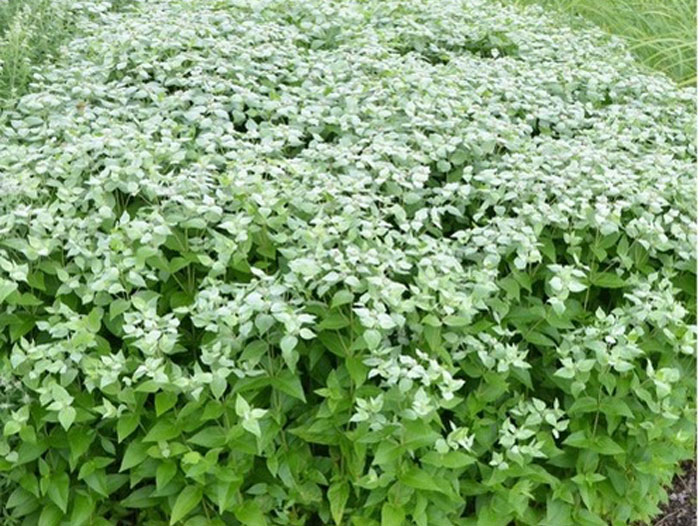2025 Perennial Plant of the Year Announced
August 5, 2024 | 3 min to read
In Raleigh, NC, the Perennial Plant Association announced Pycnanthemum muticum as the 2025 Perennial Plant of the Year®. Known as clustered mountainmint, this tough perennial attracts pollinators with small white to light pink blooms and aromatic foliage that deter deer and rabbits. Its unique silvery bracts add seasonal interest and it thrives alongside plants like black-eyed Susans and bee balms. Valued for its adaptability and minimal maintenance needs, it plays a supportive role in diverse gardens.

Raleigh, NC — The Perennial Plant Association is pleased to announce the 2025 Perennial Plant of the Year®: Pycnanthemum muticum.
Pycnanthemum muticum, voted the 2025 PPOY by PPA members, is known as clustered mountainmint, blunt mountainmint, or short-toothed mountainmint and is native to meadows and open woodlands across much of the eastern United States west to Texas. It is not a true mint (Mentha spp.) but belongs to the same family and has similarly scented leaves.
Pycnanthemum muticum is a must-have for pollinator gardens with heads of tiny white to light pink blooms attracting butterflies, wasps, and bees from July to September. Although the flowers are inconspicuous, they are surrounded by silver bracts with give the illusion of frost in summer and can persist for months.
Clustered mountainmint is a tough and adaptable perennial native with no serious disease issues and due to its aromatic foliage, it is unpalatable to deer and rabbits. Branched, vertical stems grow two to three feet tall and form a dense, weed-suppressing clump. It spreads through underground rhizomes and in moist conditions, can be aggressive although it is not invasive to the degree of true mints.
Pycnanthemum muticum plays a great supporting role in the garden. As Kyle Lambert, Perennial and Rose Manager at The Growing Place Garden Center states, “While not necessarily the show-stopper with large eye-catching flowers, it’s a great pollinator plant, adding to its supporting role credentials. It provides a nice textural contrast to finer leaved plants and has a minty fragrance when touched. Silvery bracts top the plant when in bloom, adding to the interest. It is less of a spreader when planted in a lean, well-drained location and it looks great all season with no effort.”
Sam Hoadley, Horticulture Research Manager at Mt. Cuba Center, also believes it’s a fantastic plant, stating, “If you are looking to attract pollinators en masse to your garden, look no further than Pycnanthemum muticum. It is invaluable to gardeners thanks to its beauty, vigor, adaptability, and disease and herbivore resistance.”
Pycnanthemum muticum prefers an area where it can freely naturalize and mingle among other plants. Its silver sheen plays well with other flower colors and contrasts wonderfully with plants with dark foliage. Some good companions include black-eyed Susans (Rudbeckia spp.), bee balms (Monarda spp.), blazing stars (Liatris spp.), Joe Pye weeds (Eutrochium spp.), and native grasses such as little bluestem (Schizachyrium scoparium) and switchgrass (Panicum virgatum).
The Perennial Plant of the Year® program began in 1990 to showcase a perennial that is a standout among its competitors! Perennials chosen for this honor are suitable for a wide range of growing climates, require low maintenance, have multiple-season interest, and are relatively pest/disease-free. The Perennial Plant Association Board of Directors reviews the nominated perennials and selects three or four perennials to be placed on a voting ballot.
Perennial Plant Association members vote for the Perennial Plant of the Year® and nominate additional plants for the following year’s ballot. In addition, Perennial Plant Association members have access to several marketing resources to assist with promoting the Perennial Plant of the Year®. Learn more about the 2024 Perennial Plant of the Year® at https://perennialplant.org/page/2025PPOY
The Perennial Plant Association is a trade association composed of growers, retailers, landscape designers and contractors, educators, and others that are professionally involved in the herbaceous perennial industry. With a mission to connect professionals, provide education and promote perennial plants, the association has served the horticultural industry since 1984. For more information visit perennialplant.org.
